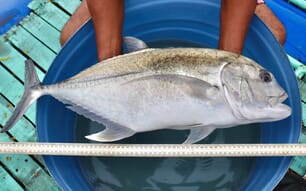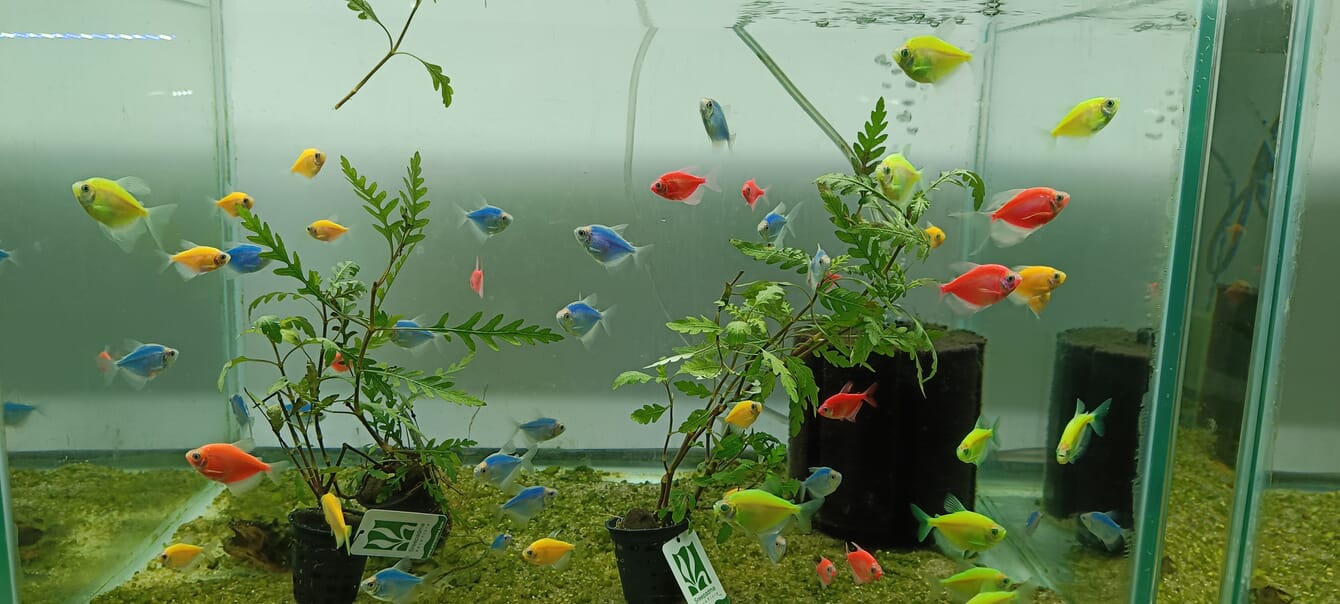
© Gurvinder Singh
Dhrubajyoti Kalita left his high paying job as a digital marketing manager in Hyderabad and returned to his native state of Assam in northeast India to start farming ornamental fish in his backyard in 2018.
The 31-year-old is based in Guwahati, the state capital of Assam, and mainly deals in tetras – such as rummy nose, cardinal, Brazilian native and Colombian – as well as aquatic plants, making an annual revenue of Rs 50 lakhs ($60,214).
“I have realised that ornamental fish farming has a good scope due to the increasing demand. My business has been growing by 30 percent every year. We are soon planning to start breeding several indigenous species that are endemic to this part of India,” he explains.
The north-east part of India comprises eight states: Assam, Mizoram, Arunachal Pradesh, Meghalaya, Manipur, Nagaland, Sikkim and Tripura. Ornamental fish farming is fast emerging as a lucrative business in the region thanks to the availability of indigenous species that are found only in these eight states, but which are in demand across India and even abroad.
Pabitra Kumar Das, a fish farmer in Kamrup district of Assam earns around Rs 3 lakhs ($3,612) per year. “I stock goldfish, angel fish and koi carp as well as indigenous species such aspabda (Ompakbi maculatus). I sell the fish locally once they reach 2 inches long. The selling price is four times the production cost of Rs 15 ($0.18) per fish. It brings a good profit,” he says.
Considering the wide range of indigenous species to farm, local government officials believe the farmers could make more profits.
“Around 5,000 farmers in the north-east are engaged in ornamental fish production, but the numbers could rise further. The market chain, however, is highly unorganised and there is a lack of proper connectivity with the buyers. Farmers do not get a good price for the fish, whilst the middlemen do. We believe that the total annual trade of ornamental fish in the north-east could be around Rs 20 crore ($2,800,000),” says Dr Sanjay Sarma, state fisheries co-ordinator of the World Bank-funded Assam Agribusiness and Rural Transformation Project (APART).
“The government offers subsidies of 40 to 60 percent to farmers under Pradhan Mantri Matsya Sampada Yojana (PMMSY), a flagship scheme of the central government to encourage ornamental fish farming,” he adds.
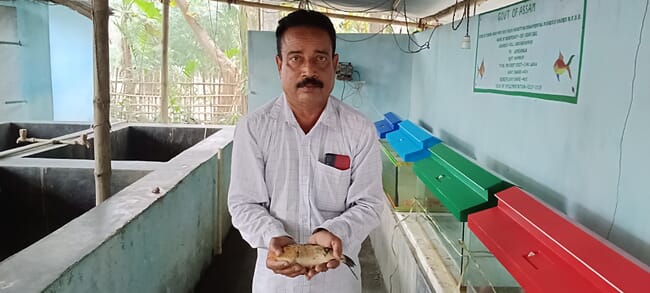
© Gurvinder Singh
Diksheeta Chutia, a researcher based in Guwahati, points out that a major problem with indigenous species is that their colour can fade if kept in aquaria.
“The species lose their pigmentation and look dull while shifted from natural water bodies to aquariums. This reduces their ornamental value compared to exotic fish, which do not have such issues. We are researching making formulated feeds using flower petal pigments, so that their colour is retained,” she explains.
She also notes that the fish are prone to fungal and bacterial infections – like dropsy, saprolegniasis, and septicaemia – and these need to be treated with methylin blue, antibacterial medications, or salt.
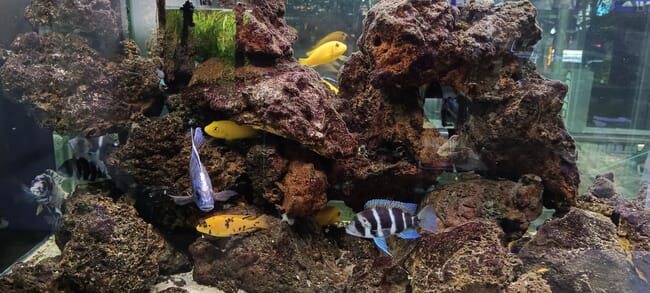
© Gurvinder Singh
Despite the issues of infection and pigmentation loss, there still remains a massive demand for indigenous species, especially Channa barca, (Ophiocephalus barca and Ophicephalus nigricans) which can fetch up to Rs 6 lakhs ($7,227) per pair in the international market.
“The high price has led to the illegal trafficking of the fish from the northeast, increasing the risk of its extinction. The locals catch them from the wild and sell them to traffickers who then export the fish to foreign countries. We do not have quarantine facilities or experts at airports to prevent trafficking,” says Dr Dandadhar Sarma, co-ordinator of the Integrated Ornamental Fish Farming Unit in Guwahati.
“We are trying to solve the issue of illegal trafficking by developing breeding and larval rearing protocols with permission from the authorities. We then train farmers to breed the fish in cement tanks in their backyards rather than hunting them in the wild,” he adds.
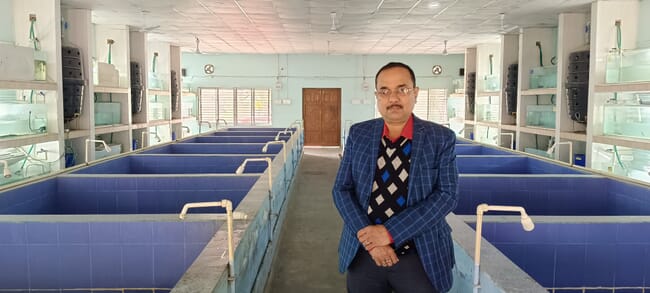
Dr Dandadhar Sarma (above) co-ordinates the Integrated Ornamental Fish Farming Unit in Guwahati, and is trying to encourage the breeding of the indigenous species to reduce the demand for trafficking © Gurvinder Singh
The Integrated Ornamental Fish Farming unit covers 16 acres and includes ponds and tanks that contain 80 species of indigenous ornamental fish and 40 exotic species.
Dr Pratul Burman, district fisheries development officer in Kamrup district, concedes that efforts are required to encourage farmers towards ornamental farming.
“The government needs more focus to encourage farmers towards ornamental fish farming. The ideal climatic conditions give us an advantage over other states. The northeast has huge potential to become the hub for ornamental fish production if the marketing issues are handled properly,” he concludes.

